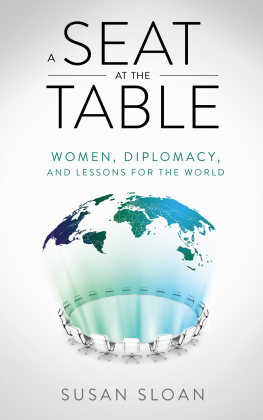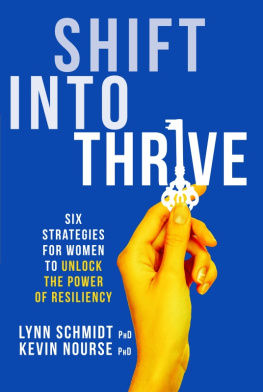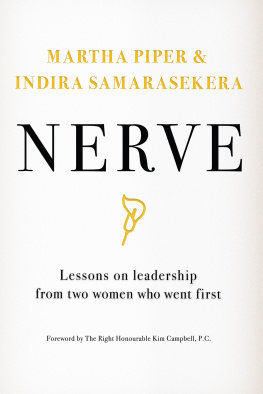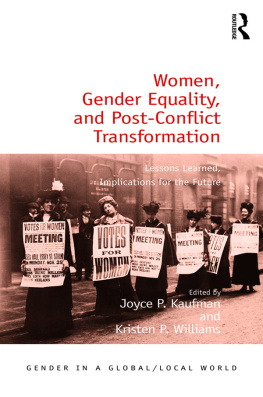PROLOGUE
The cool air dissipated into the warmth of the new spring season. I stepped out on New Hampshire Avenue for a gala and entered the grand Whittemore House through a sea of black ties and floor-length gowns. This Washington, D.C. mansion is also known historically as the Womens National Democratic Club. The club originated in 1922, shortly after the passage of the 19th Amendment granting American women the right to vote. This famous location boasts prominent women members and was the venue for historical radio broadcasts from Eleanor Roosevelt. In this house steeped in rich female history, I joined the elite crowd for a reception and seated dinner. Having attended my fair share of receptions and galas, what struck me about this particular event was that the organization honored five women leaders: two ambassadors, a Major General, a U.S. Marine Corps Captain, and a top philanthropic plastic surgeon. The president of the organization hosting the gala was also a woman.
In all honesty, rarely do I hear moving speeches at galas and receptions. We network, eat, drink, and quietly whisper during the keynote remarks. But that evening, you could hear a pin drop. The honorees shared their moving stories, and the tears rolled down my cheek onto my silk jacket. These thoughts crossed my mindwho is capturing these stories? Who is sharing the impact of gender-diversified leadership?
* * *
I must confess: I am not a diplomat or a foreign service officer. This book was inspired by my frequent interactions with American and foreign diplomats in my position at a nonprofit advocacy organization. I visit embassies for private events where the appetizers flow endlessly, and the open bar attracts the Washington social scene. Of course, the main attraction is typically the ambassador and a member of the U.S. presidential administration.
In Washington, I have found foreign service officers and members of Congress to be our celebrities. While the paparazzi may not swarm the streets following our cars, we typically do know the sound of certain motorcades bustling down Pennsylvania and Massachusetts Avenues. Diplomats have always intrigued me. Through my professional network, personal connections, and living in Washington, Ive been able to enter their worlds and hear about their travels and experiences of major historical moments.
In private conversationswhether held over the phone while I sat at my kitchen counter, or face-to-face in elegant historic embassies or classic Washington officesI asked the same questions of these leaders. In these conversations, most replied, No one has ever asked me that.
In this book, I aim to cover the influence of women in as many regions of the world as possible. The included interviews touch on different themes, and I hope the lessons resonate with you as they did with me.
Along the way, the women diplomats and dignitaries I interviewed revealed intimate details of the quest for diplomacy, their experiences, and the tremendous impact of their work. Their work has saved lives around the world, led to treaties and peace processes, and strengthened alignment in many countries. More than that, these stories have opened a treasure trove of secrets illuminating how to balance family life with an ever-changing career. This is an aspiration of both men and women of the upcoming generation. In fact, one study found that young Millennials and Gen Z chose work-life balance as the most important aspect of a career, ranking it above advancement, organization mission, culture, and healthcare or benefits.
One particular interview illustrated how much women have advanced in the foreign service and, more broadly, the passion required to pursue any goal. Barbara Bodine never imagined her dysfunctional upbringing in the San Fernando Valley would lead to her positions as a U.S. Ambassador to Yemen and Deputy Chief of Mission in Kuwait. Bodine heard the word no frequently throughout her childhood. Rather than becoming dissuaded, she understood that an education and career were her ticket out. In high school, she discovered her passion for diplomacy and desire to see the world and work on important issues.
Bodine recounts the gender dynamics of pursuing law, medicine, or... a Ph.D., or any profession besides an elementary school teacher, nurse, or secretary. As a woman, she was going to change the dynamics the minute she got into the room and sat at the table. The question was whether she could get into the room at allonly then could she ultimately find a seat at the table. That was the overwhelming environment, she reflects. What she didnt know during high school was that this discovery would set off a dramatic chain of events, leading her to live in multiple countries and even becoming an ambassador.
When Bodine looks back at the progress of women in the foreign service, she sees that it has moved quite fast. Bodine was posted to the U.S. State Departments Bureau of East Asia Affairs in the 70s, then recruited to the Near East Bureau, and was one of the first women to get Chinese and Arabic language training. Her work in the Office of Arabian Peninsula Affairsincluding security assistance for all the Arab Gulf States and her work as Country Officer for Yemendefined the rest of her career. Twenty years later, when she was posted as the U.S. Ambassador to Yemen, her Deputy Chief of Mission, political officer, economic officer, and the head of her consular section were all women with Arabic language training. During Bodines time in the foreign service, she saw the progress of womenonce stymied by the lack of language traininggrow to comprise an entire embassy of language-qualified, high-level officers. Now that is a tremendous change, notes Bodine. Her story is continued in Chapter 1 and 13.
I wanted to see whether Bodines story was unique or if it represented a powerful shift toward more women around the table. In 1970, women constituted less than 5 percent of foreign service officers and only 1 percent of senior-level officers. By 2003, women represented one-third of the officer corps and 25 percent of senior levels. Yes, both sectors saw progress, but not parity.
While gender diversity has changed in the foreign service, the personal stories of challenges and triumphs of women in this field are seldom heard. To share that knowledge, women must have a seat at the table. In Washington, foreign policy panels afford leaders the opportunity to share these experiences, but records show that in 2018 only one woman presented for every three men.
While the life of a woman diplomat may not seem different than that of a man, my interviews demonstrate that their perspective is largely underreported. Though women leaders are showcased on television, radio interviews, newspapers, and magazines, they rarely share the intimate details of their experience or the stories behind the challenges they faced. On Washingtons many foreign policy panels, the presence of women or lack thereof pierces the air like a blow-horn. Since 2014, the presence of women on foreign policy panels in Washington, D.C. has grown by nine percent, increasing from 25 percent to 34 percent. With this level of growth, gender parity on foreign policy panels in D.C. will be achieved by 2025. Fingers crossed; it will take both men and women to make it happen.







